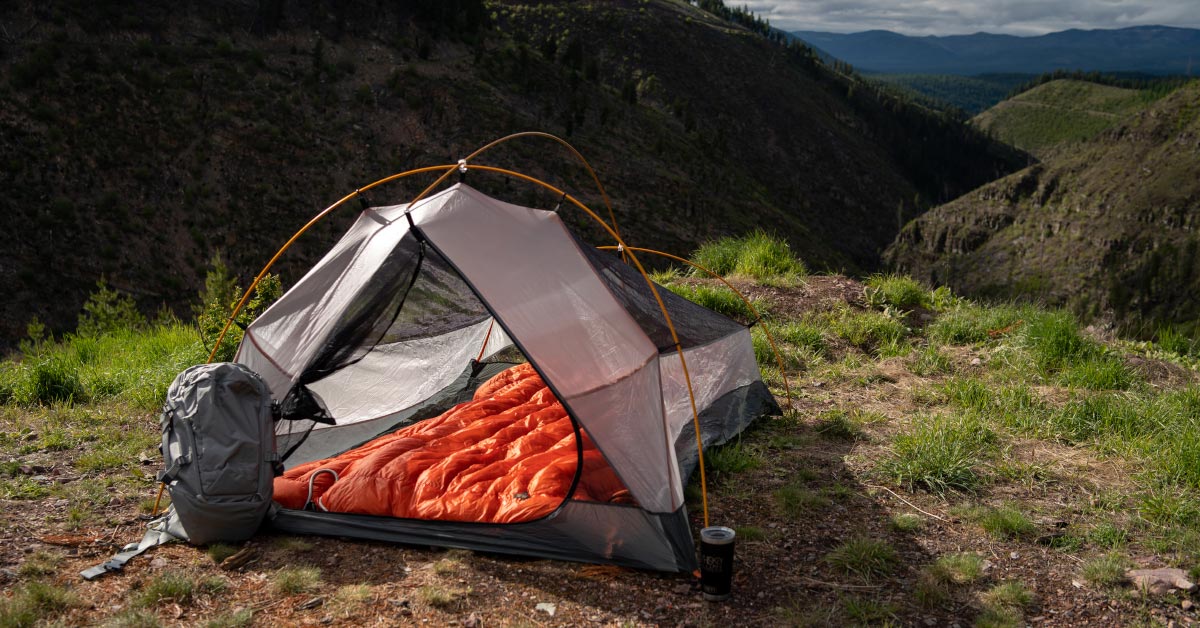Why Backpacking Quilts Are Better Than Sleeping Bags

Looking to carry less weight in your pack? Then it’s time to upgrade to a down backpacking quilt! The bottom line is that, compared to sleeping bags, quilts have a better warmth-to-weight ratio. A 20 oz quilt is warmer than a 20 oz sleeping bag, and a 20 degree quilt weighs less than a 20 degree sleeping bag. It’s no wonder that quilts are all the rage amongst ultralight hikers! But warmth-to-weight-ratio isn’t all that quilts have going for them. From usability to price, they offer a wide array of benefits that sleeping bags do not, all of which are outlined below.
But first, exactly what is a backpacking quilt? In short, it’s a hoodless, backless, sometimes zipperless, sleeping bag with an enclosed footbox from the knee down. No, they aren’t just expensive blankets! Just like sleeping bags, quilts are used in conjunction with a sleeping pad or a hammock, and can be used in any temperature a sleeping bag can, so long as its rating matches the conditions. By eschewing sleeping pads, hammock campers must also pair their primary “top” quilt with an “under quilt,” outside of and beneath the hammock, to properly insulate their backside.
- Quilts are lighter. By forgoing a full length zipper, hood, and back materials (the least insulating elements of a sleeping bag) quilts save some serious weight! Down quilts typically weigh between 16-24 oz, whereas down sleeping bags typically weigh 20-32 oz. For instance, the Hammock Gear Premium Burrow 30, with 950+ fill power down, weighs only 16 oz.
- Quilts are warmer. Ounce for ounce, quilts provide more warmth than sleeping bags. That’s because they focus on what really matters: the fact that heat rises. Because of this, a sleeping bag’s hood, back, and full length zipper are its three least insulating areas, as they only insulate underneath and around the bottom edges of the user. Quilts skip out entirely on these three least effective components, reinvesting more down into the top, sides, and footbox, where it has a greater impact. Because of how down insulates, by creating a barrier of lofted air, compressed down on which a sleeping bag user lies is nearly as uninsulating as if no insulation were there at all. Consider also that backpackers will already be carrying a hat, plus a fleece and/or down hood, as part of their layering system. Therefore, a sleeping bag’s hood is redundant as the head can be adequately insulated with clothing.
- Quilts are more packable. Another benefit of dropping the hood, back, and full length zipper is that quilts compress down smaller. They use less fabric overall, and don’t have any stiff metal components. These factors combined make quilts more packable; they take up less room in your kit.
- Quilts are more affordable. Every stitch, and baffle on a sleeping bag or quilt adds production cost to the product. And it just so happens that hoods and full length zippers are some of the most complicated and expensive parts to design and sew. By excluding hoods and full length zippers, any company producing a quilt can pass on those production cost savings to the end user. For instance, the Hammock Gear Economy Burrow 30 costs only $159, significantly less than similarly rated sleeping bags of the same weight class.
- Quilts are better ventilated (when you want them to be). Most backpacking occurs in the summer, which is why we’re just as likely to be too hot as we are to be too cold. Because quilts can more easily be unzipped, thrown partially off or draped to allow airflow, they have a wider comfort range in warmer temperatures. A 30 degree quilt would function better on a 60+degree night than a 30 degree sleeping bag. Conversely, quilts can be draped, tucked, or strapped in around you to entirely prevent cold drafts. This is a common concern among the quilt-curious, but a non-issue among experienced quilt veterans.
Well, there you have it! At pretty much every single juncture, quilts outperform sleeping bags. They’re lighter, warmer, more packable, more affordable, and better ventilated! So what are you waiting for? It’s time to upgrade that clunky old sleeping bag.
Where to start? Hammock Gear makes the very best quilts on the market at a fraction of the price and weight of comparably rated sleeping bags. Want to try out your first ever quilt without breaking the bank? Look to the Economy Burrow Quilts. Want to upgrade to the lightest and most technical quilts available? Shop the Premium Burrow Quilts.

